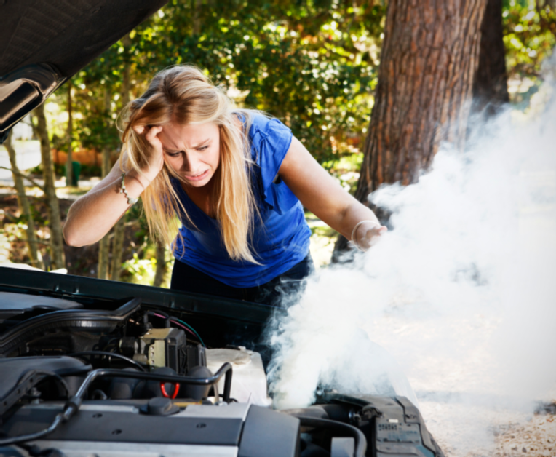Cooling System Repairs
How cooling systems work
Your engine constantly burns fuel, with temperatures inside the combustion chamber reaching 4,500°F. The cooling system protects your engine by moving this potentially harmful heat to the outside air. To do this, a mixture of water and antifreeze circulates through your engine. This coolant absorbs heat from the engine and is flowed by the water pump through hoses to the radiator. Once the radiator transfers engine heat to the outside air, the coolant circulates back to the engine and continues the cycle.
What is a coolant flush
To keep this important system properly working, vehicle manufacturers recommend servicing it at specified time or mileage intervals. The coolant’s rust inhibitors and additives may lose their anti-corrosive properties, leaving particles and debris in the system over time, this can lead to a build-up within the radiator reducing its ability to keep the engine running at the optimal temperature. To remove this build-up, a radiator flush is required. By performing a radiator flush the old coolant and particle build-up can be removed. To finalise the process, new coolant is added and the cooling system checked for correct operation.
Our Coolant System Flush Service Includes:
- Inspection of your radiator system and pressure test for any leaks
- Adding flush chemicals to the radiator
- Power flushing the system
- Refilling system with recommended coolant
- Adding sealant / lubricant to the system

Radiator Hoses
Radiator hoses should be inspected at least twice a year. Hose clamp connections should also be checked to ensure that they’re secure and free from leaks. Although hose condition has historically been determined from the outside of the hose, research shows that hoses really begin to break down from the inside out.
This process, called electrochemical degradation (ECD), generates fine cracks in the wall of the hose tube. These fine cracks extend from inside the hose tube to the outside, close to one or both ends of the hose.
Coolant can then seep through these cracks and attack the hose reinforcement. Eventually the condition worsens to a pinhole leak or a burst hose. Coolant hoses should be replaced at least every four years, or more often as needed.
It’s also a good idea to change any hoses that connect to a part of the cooling system that’s being replaced. For example, it’s wise to replace both of the radiator hoses when replacing the radiator.
